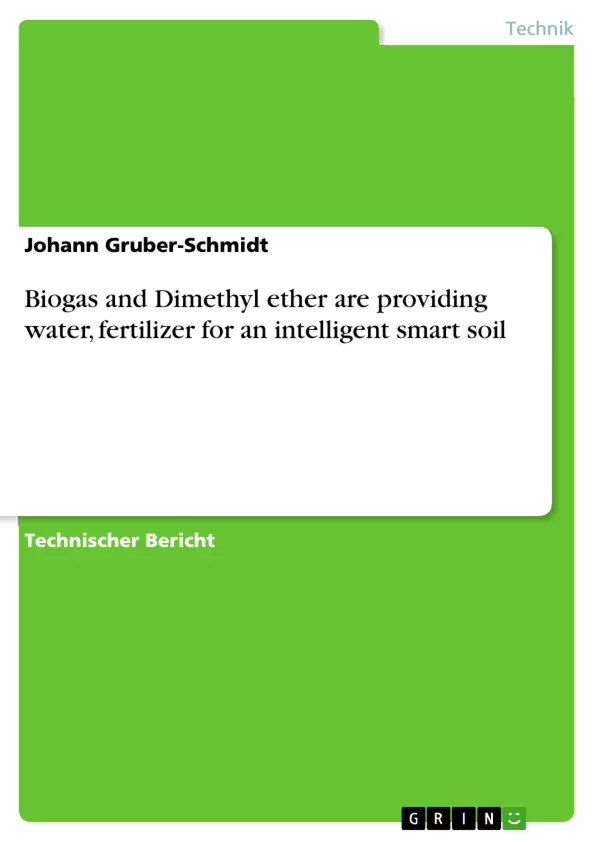Biogas is well known in agriculture and food industry. In Austria we realized a project Hagenbrunn nearby Vienna/ Austria, a biogas plant running on waste food and liquid biogenic waste. The electric power output is given with 1320 kW ele, the thermal heat generation is given with 1800 kW thermal heat realized with warm water (95°C/60°C), the substrate feed is given with 25 000 t/year, and the digestate coming out of the biogas plant is 35 000 t/year. The biogas generation of the different substrates, like waste food, grass, potatoes (e.g.) is done by measurements, testing and calculation and leads to the biogas generated by fermentation in a range of 700 Nm³/h up to 800 Nm³/h, with a methane concentration of 50% up to 65%. The biogas plant Hagenbrunn has a deep influence on the way of irrigation, the way of fertilizing in agriculture and vine culture. The biogas plant Hagenbrunn has a deep influence on the regional jobs, the regional companies, it is acting like a knot and center of competence and initiating a lot of spin offs. The main advantage of the biogas plant is using biogenic waste as input substrate and therefor the communities are glad to have a sink using and converting waste food and liquid biogenic waste to biogas. Biogas from the plant is only an intermediate step. In the first realization step biogas is converted to electricity and heat.
Inhaltsverzeichnis (Table of Contents)
- Einleitung
- Biogasanlage
- Trockensubstrat:
- Nassubstrat:
- Dimethylether
- Biogas zu Dimethylether
- Dampfreformierung von Biogas:
- Trockene Reformierung von Biogas:
- Kombination von Prozessen
Zielsetzung und Themenschwerpunkte (Objectives and Key Themes)
Der Text analysiert die Produktion von Biogas und Dimethylether als nachhaltige Energiequellen. Er beleuchtet die Funktionsweise von Biogasanlagen und die Umwandlung von Biogas zu Dimethylether. Der Text beschäftigt sich mit den verschiedenen Verfahren und deren Effizienz sowie den Vorteilen dieser Energiequellen im Vergleich zu herkömmlichen fossilen Brennstoffen.
- Nachhaltige Energiegewinnung aus Biomasse
- Biogasproduktion und -verwertung
- Umwandlung von Biogas zu Dimethylether
- Vergleich von Biogas und Dimethylether mit fossilen Brennstoffen
- Effizienzsteigerung von Biogasanlagen durch Kombination mit Gasifizierungsanlagen
Zusammenfassung der Kapitel (Chapter Summaries)
- Einleitung: Der Text führt in die Thematik der Biogasproduktion und die Bedeutung des Projekts Hagenbrunn in Österreich ein. Die Anlage wird als Beispiel für die Nutzung von Bioabfällen zur Energiegewinnung vorgestellt. Außerdem werden die verschiedenen Einsatzmöglichkeiten des erzeugten Biogases beleuchtet.
- Biogasanlage: Dieses Kapitel beschreibt die verschiedenen Komponenten einer Biogasanlage, wie beispielsweise die Substratlagerung, die Vorbereitung der Substrate und den Fermenter. Der Text geht außerdem auf die Produktion von Biogas durch anaerobe Gärung und die Nutzung des Digestats als Dünger ein.
- Dimethylether: Dieses Kapitel beschreibt die Eigenschaften und die Herstellung von Dimethylether als alternativen Kraftstoff. Es werden verschiedene Produktionswege sowie die Vorteile von Dimethylether im Vergleich zu anderen Kraftstoffen erläutert.
- Biogas zu Dimethylether: Dieses Kapitel behandelt die Umwandlung von Biogas zu Dimethylether. Es werden zwei verschiedene Verfahren vorgestellt: die Dampfreformierung und die trockene Reformierung von Biogas. Die Vor- und Nachteile der beiden Verfahren werden diskutiert.
- Kombination von Prozessen: Dieses Kapitel beschreibt die Kombination von Biogasanlagen mit Gasifizierungsanlagen zur Steigerung der Effizienz. Das Beispiel des Projekts Traismauer in Österreich verdeutlicht die Vorteile dieser Kombination.
Schlüsselwörter (Keywords)
Die zentralen Themen des Textes sind Biogas, Dimethylether, nachhaltige Energiegewinnung, Bioabfallverwertung, Gasifizierung, Dampfreformierung, trockene Reformierung, Effizienzsteigerung, Energiegewinnung aus Biomasse, alternative Kraftstoffe und erneuerbare Energien.
- Quote paper
- Dr. techn. Johann Gruber-Schmidt (Author), 2018, Biogas and Dimethyl ether are providing water, fertilizer for an intelligent smart soil, Munich, GRIN Verlag, https://www.hausarbeiten.de/document/434506



